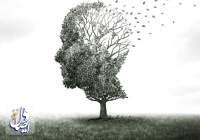On World Osteoporosis Day, we ask experts about how to deal with the condition, including medication that can be taken and vitamin deficiencies to be aware of. Five lifestyle changes to consider include more weight-bearing exercise, sleeping well and taking care of your gut microbiome.
- Alzheimer's diagnosis revamp embraces rating scale similar to cancer
- China pledges 'final victory' over COVID
- Why has China had such a struggle vaccinating the elderly against Covid-19?
- New COVID model predicts over 1 million deaths in China through 2023
- China COVID cases rise, hard-hit Beijing districts shut schools
- The global burden of osteoporosis has doubled in the last 30 years
- Pizza, Cake, Ice cream. Why do we eat foods we know are unhealthy?
- Experts review the chia seed and lemon water drink
- vitamins don’t do as much as we think, major study suggests
- Specific gene mutations may be responsible for how long someone lives with Parkinson's disease







